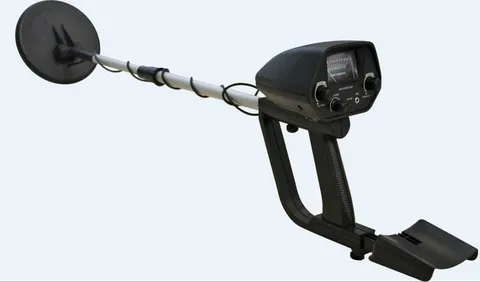Room and pillar mining is a widely-used method for extracting coal, salt, and other minerals from underground deposits. In today's mining industry, there is a growing emphasis on efficiency and sustainability, prompting a deeper exploration into the effectiveness of room and pillar mining. This method, which involves creating a network of rooms and pillars within the underground deposit, has been a staple in the industry for years, but advancements in technology and mining practices have raised important questions about its efficiency. In this paper, we will delve into the efficiency of room and pillar mining in today's industry, examining its benefits, challenges, and potential for improvement.
Room and pillar mining is a method of extracting underground deposits of coal, salt, and other minerals. This technique involves leaving behind a series of rooms (or chambers) while extracting ore, and employing pillars to support the roof of these rooms. This method has been widely used for many years, but as technology and mining practices have evolved, there has been a push to explore the efficiency of room and pillar mining in today's industry. One aspect of this exploration involves examining the use of modern equipment and technology to improve the efficiency of room and pillar mining. For example, advanced cutting and hauling equipment can increase productivity and reduce the time and labor required for extraction. Additionally, there is a focus on optimizing the layout and design of room and pillar mines to maximize resource recovery and minimize waste. This includes incorporating geotechnical analysis and 3D modeling to better understand the rock mass and plan for efficient extraction. Furthermore, the industry is also exploring ways to improve safety and environmental sustainability in room and pillar mining operations. This includes developing better ventilation and dust control systems, as well as implementing best practices for reclamation and land restoration. Overall, the exploration of the efficiency of room and pillar mining in today's industry is driven by the desire to maximize productivity, minimize environmental impact, and ensure the safety of workers. As technology continues to advance, it is likely that new innovations and practices will continue to improve the efficiency and sustainability of room and pillar mining.
Room and pillar mining is a technique used to extract underground mineral deposits by leaving behind rooms or chambers while extracting ore, supported by pillars. The industry is exploring the efficiency of this method through the use of modern equipment and technology to improve productivity and reduce labor. Additionally, optimizing mine layout and design, incorporating geotechnical analysis and 3D modeling, and focusing on safety and environmental sustainability are key areas of exploration. The goal is to maximize resource recovery, minimize waste and environmental impact, and ensure worker safety, with ongoing advancements in technology and best practices driving improvements in efficiency and sustainability.
The Basics of Room and Pillar Mining

Room and pillar mining is a widely used method for extracting coal, salt, and other minerals. It involves creating a network of rooms and pillars within a coal seam or mineral deposit. The rooms are typically 20 to 30 feet wide and the pillars are left standing to support the roof. The process begins with the formation of the rooms by removing the coal or mineral. This is typically done using a continuous mining machine, which cuts and loads the material onto a conveyor belt. Once the room is created, the pillars are left in place to support the roof. Room and pillar mining is generally considered to be a safer method compared to other underground mining techniques, as the pillars provide structural support to the mine. However, over time, the pillars can become unstable, leading to potential collapses and roof falls. To minimize this risk, careful planning and analysis of the geology and mining conditions are required. Proper pillar design and size are crucial to maintaining the stability of the mine. Additionally, monitoring and reinforcement techniques may be employed to ensure the safety of the operation. Overall, room and pillar mining is a foundational technique in the mining industry and plays a significant role in the extraction of coal and minerals around the world.
The History and Evolution of Room and Pillar Mining

Room and pillar mining is a method of extracting underground deposits of coal and other minerals. It involves the excavation of a series of rooms connected by pillars of coal, which support the overlying rock and allow for the extraction of the mineral deposit. The history of room and pillar mining dates back to ancient times, with evidence of this method being used as far back as the second century in China. The technique spread to Europe in the Middle Ages and was later brought to the United States during the colonial period. Over time, room and pillar mining has evolved and become more mechanized. Early methods relied on manual labor and the use of hand tools, but as technology advanced, machinery such as continuous miners and shuttle cars were introduced to improve efficiency and safety. Today, room and pillar mining is still widely used in the mining industry, particularly for coal extraction. Modern techniques continue to evolve, with automation and remote operation becoming more common to enhance productivity and protect miners from the hazards of underground work. Despite the development of newer mining methods, room and pillar mining remains an important part of the industry, especially in regions with thick, shallow mineral deposits.
Advantages and Disadvantages of Room and Pillar Mining

Advantages of room and pillar mining: 1. It is a versatile method that can be used for a variety of different geological conditions and types of mineral deposits. 2. It allows for the extraction of large, horizontal deposits of ore, as well as smaller, more irregularly shaped deposits. 3. It is a relatively safe and stable method of mining, as the surrounding rock provides support for the mined-out areas. Disadvantages of room and pillar mining: 1. It can be less efficient than other methods of mining, as a significant amount of the ore is left behind in the pillars of rock that support the mine. 2. It can lead to subsidence and collapse of the overlying rock, especially in areas with weak or unstable geological conditions. 3. It requires a significant amount of additional infrastructure, including ventilation systems and support pillars, which can increase the overall cost of the mining operation.
Room and Pillar Mining Techniques and Equipment

Room and pillar mining is a type of underground mining technique commonly used to extract coal and other mineral resources. This method involves the use of a series of rooms and pillars created through the excavation of the mineral deposit. The equipment used in room and pillar mining typically includes continuous miners, drill rigs, loaders, shuttle cars, and roof bolters. Continuous miners are used to cut into the coal or mineral deposit, while drill rigs are used to create holes for explosives. Loaders and shuttle cars are used to transport the extracted material to the surface, and roof bolters are used to reinforce the ceiling of the mined-out area. The room and pillar mining technique is especially well-suited for extracting thick deposits of coal and other minerals with a relatively low cost and high degree of safety. While it has its advantages, this method can also result in significant amounts of waste material left behind, and may not be as efficient in certain geological conditions. Nonetheless, room and pillar mining remains a popular choice for many mining operations due to its versatility and relatively low cost.
Safety Measures in Room and Pillar Mining Operations
See also: method of mining
Safety measures in room and pillar mining operations include ensuring proper ventilation to prevent the buildup of harmful gases, conducting regular inspections of equipment and support systems, implementing appropriate ground control measures to prevent collapses and ensuring that workers are properly trained in safe mining practices. Other safety measures may include providing proper personal protective equipment, maintaining a clean and organized work environment, and implementing emergency response plans. Regular safety audits and ongoing training are crucial to maintaining a safe working environment in room and pillar mining operations.
Room and Pillar Mining in the Modern Age
Room and pillar mining in the modern age has advanced significantly from its traditional methods. Today, it involves the use of sophisticated machinery and technology to extract coal, salt, and other minerals from underground mines. Automation and remote operation have made the process more efficient and safer for workers. Additionally, the use of advanced ventilation and monitoring systems has improved air quality and reduced the risk of accidents. Overall, room and pillar mining in the modern age is characterized by enhanced productivity and safety measures compared to its historical practices.
Environmental Impact of Room and Pillar Mining
Room and pillar mining can have significant environmental impacts. The method involves creating large open spaces underground, which can lead to subsidence and collapse of the land above. This can cause damage to local ecosystems and wildlife habitats. Additionally, the process of extracting and processing the coal or other resources can result in the release of pollutants and greenhouse gases into the atmosphere. It can also lead to water contamination and soil erosion. Therefore, the environmental impact of room and pillar mining should be carefully assessed and managed to minimize its negative effects.
The Future of Room and Pillar Mining Technology
The future of room and pillar mining technology is focused on improving efficiency, safety, and environmental impact. This includes the development of autonomous equipment to reduce the need for human labor in dangerous underground conditions. Additionally, advances in communication and data collection technology are being integrated into room and pillar mining operations to enhance productivity and safety. In terms of environmental impact, there is a growing emphasis on reducing the carbon footprint of mining operations through the use of cleaner energy sources and more efficient ventilation and dust control systems. Overall, the future of room and pillar mining technology is aimed at creating a more sustainable and technologically advanced industry.
Room and Pillar Mining: A Sustainable Approach to Coal Extraction<
See also: copper open pit mining
/h2>Room and Pillar Mining is a sustainable approach to coal extraction where the coal seam is mined in a series of rooms while leaving pillars of coal to support the roof of the mine. This method is considered sustainable because it allows for the extraction of coal while minimizing the impact on the surrounding environment. The pillars left behind provide stability to the mine and help prevent collapses. The process involves the use of continuous mining machines to cut into the coal seam and load it onto shuttle cars for transport to the surface. The rooms are then systematically developed, leaving behind pillars of coal to support the roof. Once the coal in a particular area has been extracted, the pillars can be removed and the area can be reclaimed for other uses. Room and Pillar Mining is known for its efficiency and safety, as well as its minimal impact on the environment. It is a widely-used method in coal mining operations around the world and is often preferred in situations where the coal seam is relatively thick and easily accessible. Overall, Room and Pillar Mining offers a sustainable approach to coal extraction that balances the need for energy resources with environmental considerations, making it an important part of the global coal industry.
Room and Pillar Mining: Maximizing Resource Recovery and Profitability
Room and pillar mining is a method of extracting underground coal deposits that involves leaving behind pillars of coal to support the roof of the mine. This type of mining is known for its ability to maximize resource recovery and profitability by extracting a high percentage of the available coal while also providing a stable and safe working environment for miners. The room and pillar method involves creating a network of rooms and pillars within the coal seam. The rooms are the areas where the coal is extracted, and the pillars are left in place to support the roof. This design allows for a high level of resource recovery, as the coal can be efficiently extracted from the rooms while still maintaining the structural integrity of the mine. In addition to maximizing resource recovery, room and pillar mining is also known for its profitability. By leaving behind pillars of coal, the mining operation can maintain a stable roof and reduce the risk of roof collapses. This leads to a safer working environment for miners and reduces the costs associated with roof support and maintenance. Overall, room and pillar mining is an effective and profitable method for extracting coal from underground deposits. By maximizing resource recovery and providing a safe working environment, this mining technique continues to be a popular choice for coal mining operations around the world.

0 Comments